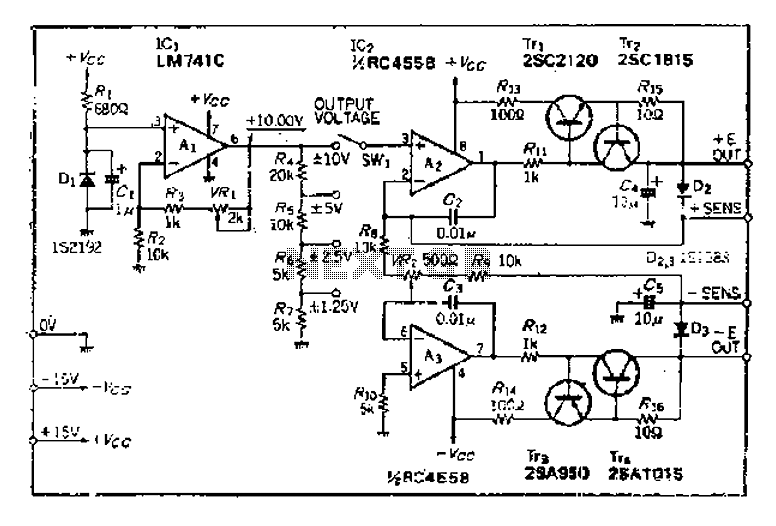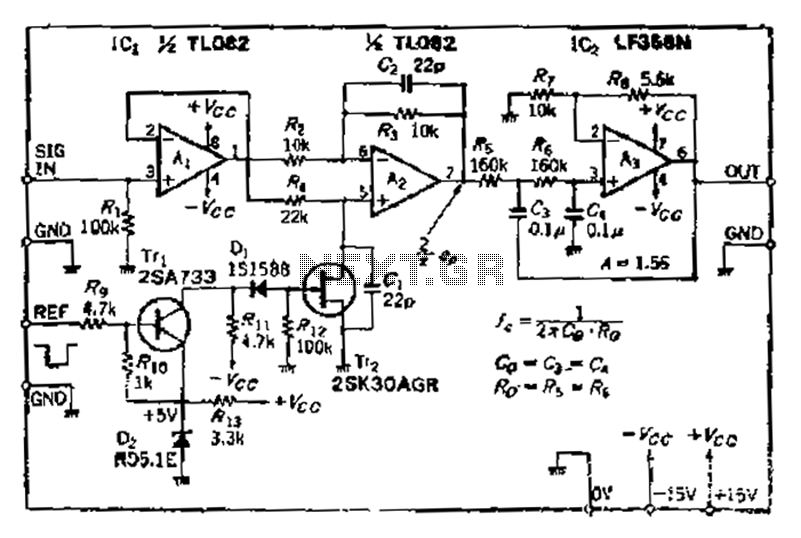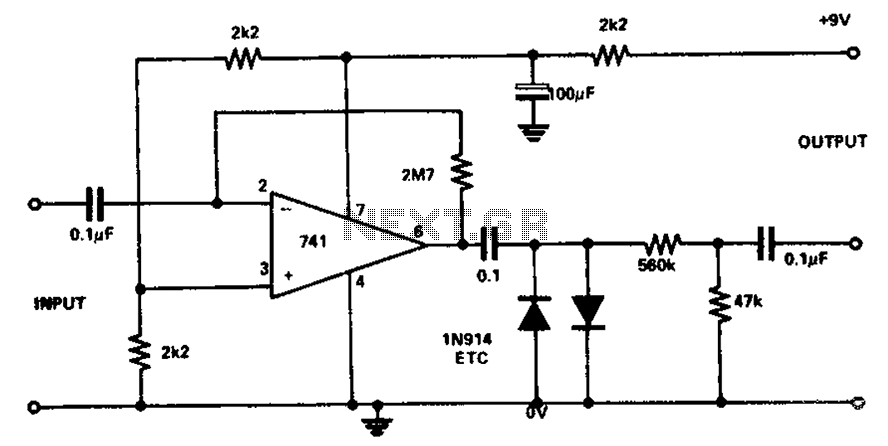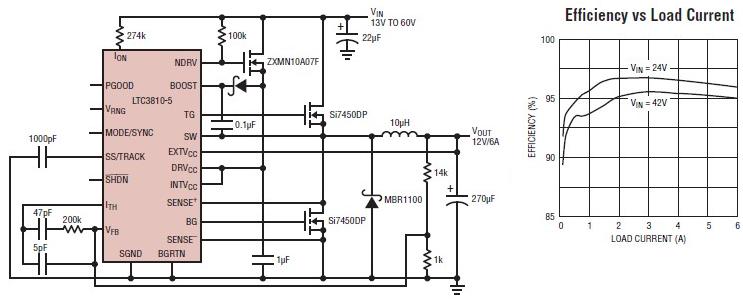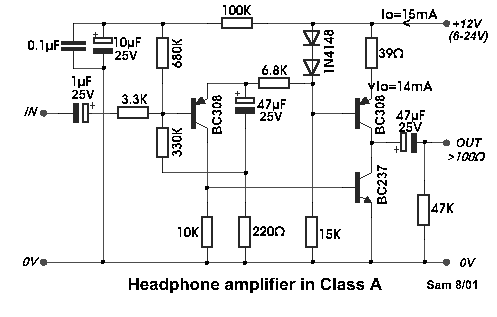
Boost 3.5V regulator circuit

Boost 3.5V regulator circuit. This chip can boost or create a stable voltage supply from approximately 3V DC to a DC voltage of 3.5V.
The boost regulator circuit is designed to increase a lower DC voltage, specifically from around 3V to a stable output of 3.5V. This circuit typically employs a switching regulator topology, which is efficient for converting voltage levels while minimizing power loss.
The primary component of this circuit is a boost converter IC, which integrates various functionalities such as a switching transistor, control logic, and feedback mechanisms. The input voltage is fed into the circuit, where it is stored in an inductor during the 'on' state of the switching cycle. When the switch turns 'off', the inductor releases its stored energy, which is then transferred to the output capacitor, raising the voltage to the desired level.
Key components of the circuit include:
1. **Inductor**: This stores energy when the switch is closed and releases it to the output when the switch is opened.
2. **Switching Element (Transistor)**: This is typically a MOSFET that alternates between on and off states to control the energy transfer.
3. **Diode**: A fast recovery diode is used to prevent backflow of current and to ensure that the energy from the inductor flows to the output capacitor.
4. **Output Capacitor**: This smooths out the voltage at the output, providing a stable DC voltage to the load.
5. **Feedback Resistors**: These are used to create a voltage divider that feeds back a portion of the output voltage to the regulator IC to maintain the desired output voltage level.
The circuit may also include additional components such as input and output capacitors for filtering, as well as protection features like overcurrent protection and thermal shutdown to ensure reliable operation. The design must consider the load requirements, switching frequency, and efficiency to optimize performance.
When implementing this circuit, attention should be paid to the layout to minimize electromagnetic interference and ensure stable operation across varying load conditions. Proper thermal management should also be considered, as boost converters can generate heat during operation. Boost 3.5V regulator circuit With this chip can boost or build stable voltage supply to V ~ 3.V DC voltage into a DC voltage of 3.5 V,
The boost regulator circuit is designed to increase a lower DC voltage, specifically from around 3V to a stable output of 3.5V. This circuit typically employs a switching regulator topology, which is efficient for converting voltage levels while minimizing power loss.
The primary component of this circuit is a boost converter IC, which integrates various functionalities such as a switching transistor, control logic, and feedback mechanisms. The input voltage is fed into the circuit, where it is stored in an inductor during the 'on' state of the switching cycle. When the switch turns 'off', the inductor releases its stored energy, which is then transferred to the output capacitor, raising the voltage to the desired level.
Key components of the circuit include:
1. **Inductor**: This stores energy when the switch is closed and releases it to the output when the switch is opened.
2. **Switching Element (Transistor)**: This is typically a MOSFET that alternates between on and off states to control the energy transfer.
3. **Diode**: A fast recovery diode is used to prevent backflow of current and to ensure that the energy from the inductor flows to the output capacitor.
4. **Output Capacitor**: This smooths out the voltage at the output, providing a stable DC voltage to the load.
5. **Feedback Resistors**: These are used to create a voltage divider that feeds back a portion of the output voltage to the regulator IC to maintain the desired output voltage level.
The circuit may also include additional components such as input and output capacitors for filtering, as well as protection features like overcurrent protection and thermal shutdown to ensure reliable operation. The design must consider the load requirements, switching frequency, and efficiency to optimize performance.
When implementing this circuit, attention should be paid to the layout to minimize electromagnetic interference and ensure stable operation across varying load conditions. Proper thermal management should also be considered, as boost converters can generate heat during operation. Boost 3.5V regulator circuit With this chip can boost or build stable voltage supply to V ~ 3.V DC voltage into a DC voltage of 3.5 V,
